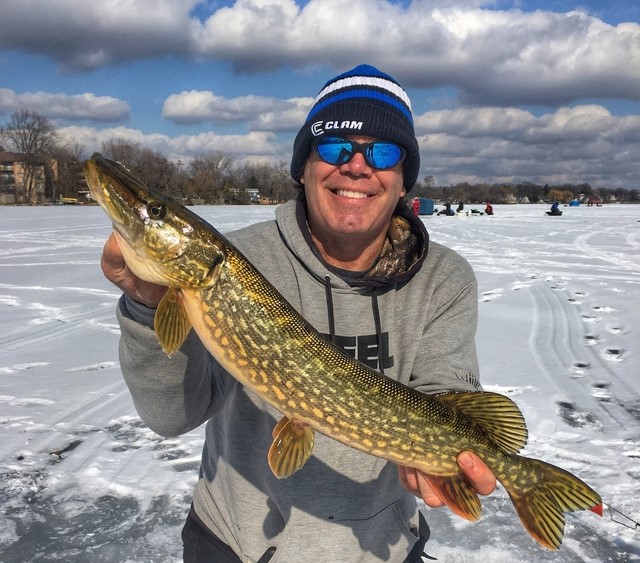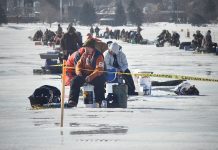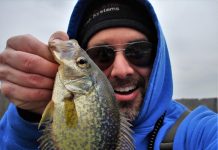Braving the winter chill to catch wild fish is a niche of the fishing discipline that’s growing in popularity. Ice anglers have been around for centuries. But with so many new fishermen flocking to the sport, it’s important that proper safety precautions are taken at all times.
There’s no such thing as “truly safe” ice. However, with the right techniques and equipment, you can give yourself the best chance of avoiding an accident or surviving unharmed if there is one. Read on to learn how to stay warm and safe on the ice.
Test the Ice Depth

Before you begin your adventure out onto frozen waters, check the ice depth to see if it’s thick enough to support your weight. As a general rule, two inches of ice is unsafe, four inches is thick enough to walk on, five to six inches can support a snowmobile or ATV, and eight inches or thicker can support small vehicles. For larger and heavier vehicles, you’ll need to see a depth of 12 inches at least.
Use the Buddy System
As with any outdoor adventure, communication and companionship are critical parts of ice fishing. And besides — who wants to go sit out on the ice all day alone?
Make sure you tell your friends and loved ones where you’re going and when you plan to be back. Have a phone with you if you can get reception, or use a radio or try out a signal booster if you cannot. Bring a friend along whenever you can. Ice fishing alone is not recommended.
Warmth and Ventilation
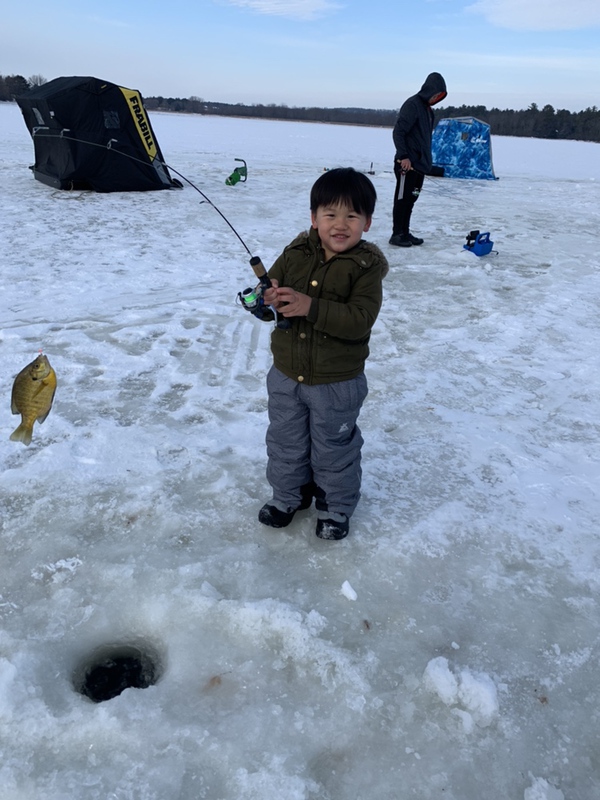
Your fishing shelter is going to need some kind of radiant heat source to keep you warm. However, if you’re not careful, you can fall victim to carbon monoxide poisoning the same way folks do when they leave their car running in the garage. Make sure your shelter is vented to avoid this deadly scenario.
Have Ice Picks
All regular ice anglers should have one of these. Make sure you were them around you neck so you can easily get to them if you fall through, they’ll be no good in your pockets or with the rest of your gear. Make sure you practice using them so that if the moment comes, you don’t even have to think about what to do.
Have a Throw Rope
Falling through your fishing hole is one thing, but ice fishing accidents can see whole ice sheets break off. If your companion is adrift, you’ll need a way to get them back to shore. A quality length of rope is essential. You might even want to get some practice in so you know how to throw it should you ever need to.
Head in Before Dark
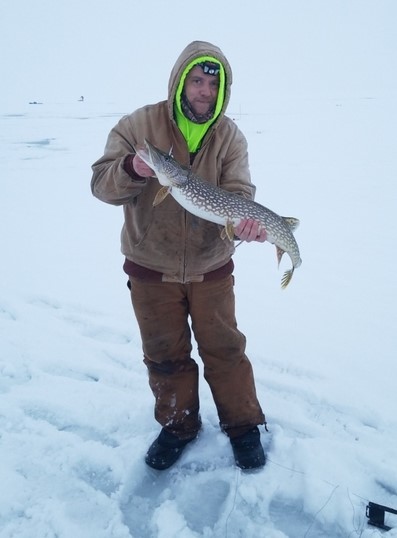
Even if you’re on the best fishing trip of your life, it’s not safe to stay out on the ice when it gets late. Rescue crews won’t be able to find you if something happens, and the temperature can drop even further, putting you at more risk than you want to take. Do everyone a favor and wrap things up while there’s still sunlight.
Of course, the fish don’t stop biting at night, so if you do plan for a late trip, have plenty of lighting. Not only will it help you see, but it will help snowmobilers see you.
There are entire companies that specialize in ice fishing equipment. Much of it is designed to keep you safe. Remember to respect the ice no matter what. Even when things seem safe, you never know what exactly is going on beneath you when you’re ice fishing.
Ready to Get Out on the Ice?
Fishidy uses an advanced fishing forecaster to show when and where the fish will be biting. You can also link up with anglers near you to get local reports on the ice. You can download the Fishidy app here.

